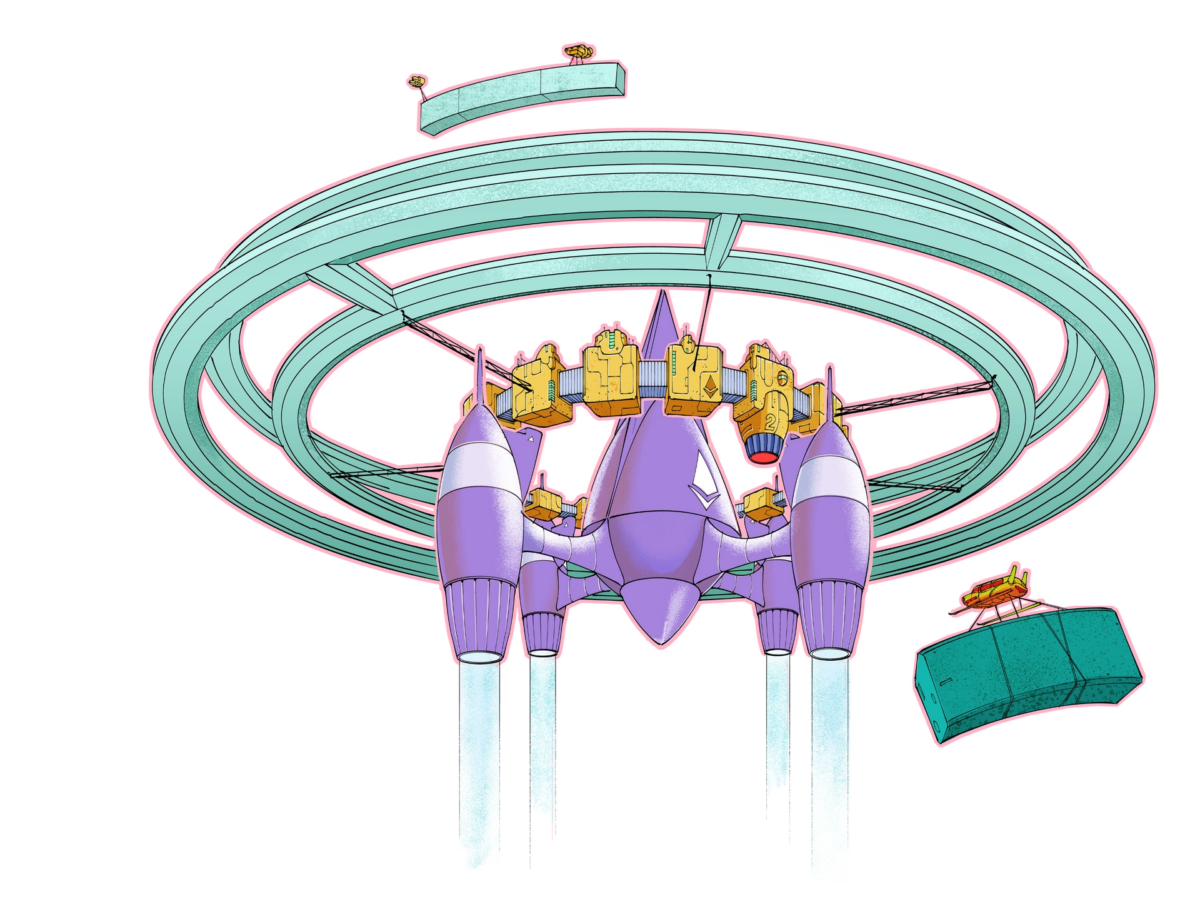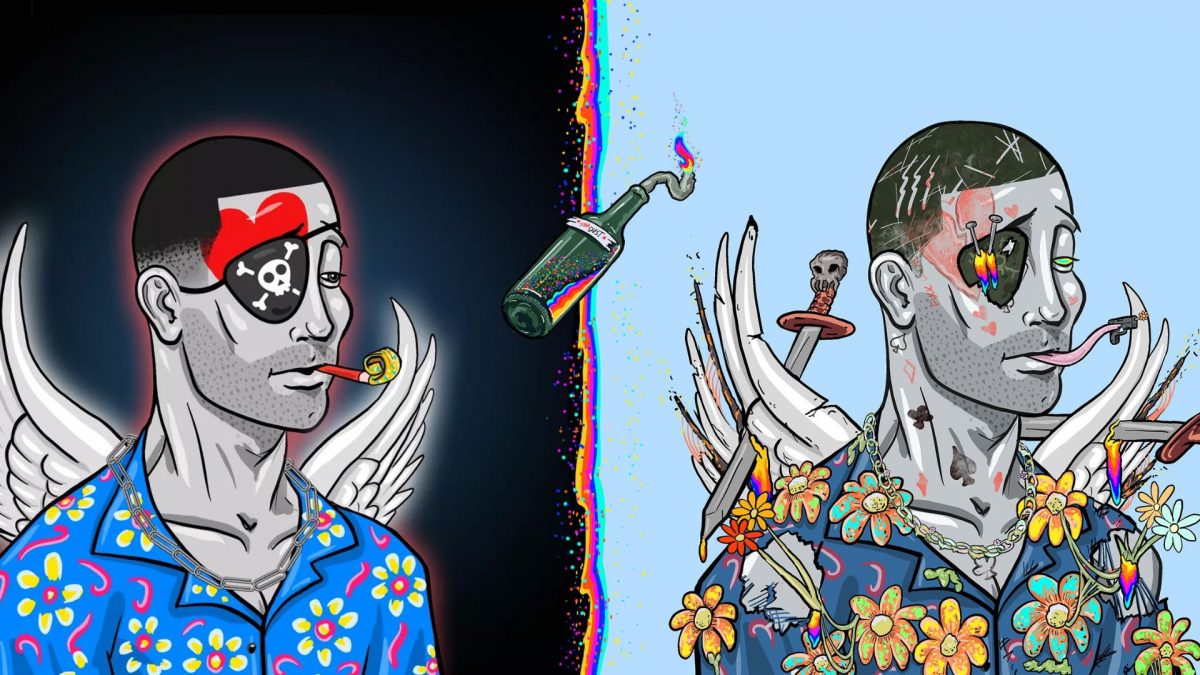The thing about cliché is that it always contains a grain of uninteresting yet vital truth. The fact that the sky’s blueness is so commonplace as to fade into the background of conscious daily thought, for example, does nothing to negate its value to physics, biology, and beyond. When looking at the state of Web3 through the lens of 2022, the cliche understatement that should come to mind is that progress is not linear. But just how progress makes its nonlinear passage through history matters greatly. It’s a jagged thing – its movement messy and unpredictable, even to those well-accustomed to the volatile and the sporadic.
There was plenty of frenetic movement in the world of crypto and NFTs in 2022. Even those outside Web3’s walls are tired of hearing phrases like “bear market” and “crypto winter.” But just as the idea of zooming out is essential in maintaining a balanced mental health outlook in the NFT ecosystem, so is the idea of placing 2022’s troubles and successes in the context of the broader picture of where Web3 is going. When we do so, we find both things to be excited about and cautious of in the coming year.
NFTs went green (kind of)
The conversation surrounding NFTs and their impact on the environment evolved in a primarily positive way this year. An increasing amount of people began to realize that the dire claims made by the blockchain’s biggest detractors were largely overblown and without proper framing.
The biggest event that impacted the environmental discussion was Ethereum’s merge in September. The second-largest blockchain’s switch to a proof-of-stake (PoS) validation system meant it reduced its energy consumption by an absurd 99.5 percent and acted as the final stake in the coffin of the already dubious argument that NFTs were bad for the environment.
Beyond its environmental boon, the merge helped set up Ethereum for future growth. Aside from the millions of NFTs the blockchain authenticates, countless other decentralized apps and decentralized financial systems depend on the blockchain to function. Further upgrades that the merge enables include what Ethereum’s co-founder, Vitalik Buterin calls the “surge, verge, purge, and splurge.” These will ensure the blockchain can scale better in the future and allow for a process called “sharding,” which makes network nodes easier to operate.

Another benefit of switching to a PoS system was lowering the barrier of entry for those who want to participate in Ethereum’s staking community. Where crypto mining required users to own and operate expensive and cumbersome equipment, with the new version of Ethereum, even a dedicated laptop could do the job. Raising the number of validators in Ethereum increases the network’s chances of being more decentralized.
Beyond all of this, the merge was a much-needed win in a rough year for the crypto community. Ethereum has long been the poster child of NFTs, and that it executed an exceedingly complex engineering feat so smoothly during a crypto winter is nothing to be scoffed at. Like any industry, blockchain-based tech can do more to reduce its environmental presence, but efforts like the merge have shown that it’s not impossible to do so.
The royalties debate rages on
The discussion about creator fees/royalties in the NFT space flared up like never before in 2022. While they have remained a major characteristic of the NFT ecosystem for years, royalties aren’t hard-coded into the market or the individual smart contracts that make the buying, selling, and trading of NFTs possible. As talk centered around the role that creator royalties can, should, and do play in the NFT ecosystem began to heat up throughout the year, zero-royalties websites like sudoswap and X2Y2 emerged on the scene, becoming popular platforms in the process.
What’s more, several of the community’s biggest marketplaces that support creator royalties — including Magic Eden and OpenSea — went through an identity crisis regarding whether or not they would honor and enforce them and for which collections these rules would apply. OpenSea stirred the pot more than any other platform, given its size and status in the industry. It initially floated a plan to eliminate royalties enforcement for existing collections before facing severe backlash from the community and abandoning the idea.
Taken together, these events helped catalyze a kind of unionization movement amongst artists and builders in Web3 who vocalize two main points. The first is that Web3 and the platforms that help sustain it today would not be what they are without royalties. Artists create the value that the entire ecosystem thrives off of. Take away the royalties that enable them to continue creating, and the whole setup will likely falter. Secondly, one of the most crucial ideas that Web3 is built upon is artist empowerment. The royalties question is a poignant stress test for that ethos and for those individuals and platforms who have gained fame and fortune on the back of such creator fees.
Redemption arcs aren’t just for fiction
Several NFT projects came back from tough situations this year that left them with battered reputations and disgruntled or outright enraged investors. The most egregious offenses to NFT communities resulted in prosecution by the Department of Justice. Still, excluding illegality, a handful of communities once thought dead in the water made surprising comebacks in 2022. DeGods rise to fame, Pudgy Penguins’ clever strategy in leveraging their family-friendly IP to branch out beyond the Web3 world, and Pixelmon’s Lazarus trick all fall under this category.

These projects aren’t just noteworthy in their ability to turn around floor prices and investor attitudes; they show the NFT ecosystem that steady innovation, patience, and commitment still walk the Web3 earth. The world of crypto and NFTs is rampant with scams, and to a degree, cynicism and skepticism are necessary tools to navigate a decentralized space wherein no third party has your back. But like any tool, they can be misused. In the context of a crypto winter, it was refreshing to see such redemption arcs. With any luck, 2023 will see more, and we shouldn’t begrudge them their flowers.
Crypto and NFT regulation is changing
The complicated relationship between regulatory bodies in the U.S. and the crypto and NFT sphere became even more convoluted in the wake of events like the fall of the algorithmic stablecoin Terra USD and the calamitous collapse of FTX this year.
While it’s too early to tell precisely how these events will alter regulatory efforts in the U.S. and abroad, the pressure to rein in the crypto space to avoid such meltdowns in the future has only grown because of them. While speaking to nft now in July, SEC Commissioner Hester Peirce expressed discontent with how the organization and its Chair, Gary Gensler, had formulated a seemingly punitive relationship with the crypto world rather than a constructive one. 2022, she said, was shaping up to be the year of setting a more cooperative basis for future legislative and regulatory regulation in the space.
However, that hope has dimmed in the wake of events like the fall of FTX. Sentiment within and without the Web3 sphere is divided, with individuals in both spaces attributing FTX’s failure to either an excess or lack of decentralization and oversight. That picture is further complicated by accusations from people like Representative Tom Emmer (R-MN), who has accused Gensler’s relationship with SBF and the crypto world of being problematically close to one another, a vision of things that contrasts starkly with the SEC’s movements this year.

While the existence of such backdoor ties remains a possibility, Emmer’s positions are seemingly conflicted, as he received donations from figures linked to SBF and FTX, helped pen a letter in March urging the SEC to step back from investigating crypto exchanges (including FTX), and has a habit of declining to comment when questioned on the kind and amount of donations he’s received from the crypto exchange.
Emmer’s (and other regulatory skeptics’) goal may ultimately be to get federal institutions to cool off oversight efforts in an emerging industry whose pockets run deep but whose reputation has taken hit after hit in 2022. Regardless, expect the ethos of decentralization in crypto to face a robust litmus test in 2023. Likewise, expect bad actors to use the coming (and necessary) conversation surrounding the future of decentralization as a cover to shoehorn in policies that declaw the best aspects of Web3 in the name of protecting the traditional financial structures that stand to lose the most from its continued growth.
Web3’s troubles make the space stronger (in the end)
It was impossible for those in the space not to have Web3’s most tried-and-true lessons hammered into them this year. Some of the space’s most significant rug pulls occurred in 2022, sharpening Web3 denizens’ intuitions for the NFT red flags that we all should be well aware of by now.
The collapse of Three Arrows Capital, FTX, and Luna and TerraUSD showed everyone how playing fast and loose with people’s money just isn’t going to turn out well, no matter the amount of Web3 evangelizing going on behind it. The space is having a rough go of things, it’s true, but like an immune system dealing with a particularly potent infection, Web3 will likely come out of the year’s difficulties stronger as a whole precisely because of the challenges they presented it.
Condemn cliché all you like, but nothing worth doing ever came easily to those doing it. If Web3 is as valuable and potentially revolutionary as its most prominent proponents say it is — and it might be, at least in some ways — then we should expect its hardships to be on a scale equal to its ambitions. If they weren’t, it would likely be a sign that we’re not aiming high enough. And who wants to do that?
Source NFT now

